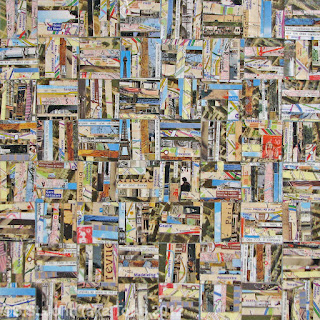It might seem unusual for me to recommend a book like Davis
Mas Masumoto’s
Four
Seasons in Five Senses. For the most part I avoid foodism and
any writing that is associated with it.
I find food nerds and dietary fanatics tiresome.
I might fit the profile of a so-called foodie. I do
love food, I love to cook and I love to eat. I couldn’t remember my first trip to a farmer’s market,
because I was an infant. I grew up
in a world where farmer’s markets, canning, pickling, baking and cooking from
scratch were the norms. “Slow
food” was just food. Now, I am not a purist. For example, there are emergency
brownie mixes in my cupboard at all times. I really do admire the slow food movement, I even like to
apply many of its principals to what I do, calling it slow art. It’s
just when people take their foodism to the extreme. When anyone lives their lives trying to convert others, and
particularly me, I become a little more than cynical. I have experienced that scowl when I make the mildest,
critical comment against a fancy, high-end, slow food festival in San
Francisco. We have all met that person.
David Mas Masumoto has a credibility that few writers about
slow food have. He is a good
writer. But first and foremost, he
is a farmer. And no, he is not
some gentleman farmer, moved back-to-the-land, etc. Masumoto is a third generation California farmer growing
peaches and grapes in California’s Central Valley. At times his writing is overly sentimental and even
hokey. Masumoto gets a pass. He’s out there every day working in the
hot sun. He’s an organic grower
and his book details his traditional, “slow” methods for growing peaches in a
way a factory farm is incapable of doing. He is the definition of labor-intensive.
The story Masumoto Peaches is the story that could be told
of many California crops and family farms. California is the biggest agricultural producer in the
United States and ranks number one in crop after crop. The odd thing about California is that
most of us in our cities and suburbs are completely disconnected from
agricultural California. Sure, we
eat the food, we might even have our favorite stalls at a local farmer’s
market, but we easily forget there is this “other” California where our food is
grown. Why I so recommend Davis
Mas Masumoto’s Four Seasons in Five Senses
is that it helps connects us to a part of California that we simply don’t know
very well. It is a book that most
of us in California need to read.
As I read the book I also discovered that I was reading an
art book.
And yes, Masumoto’s
peaches might be called works of art.
The way the
Masumoto Family and their
workers grow and care for their peaches speaks greatly to the artistic
process.
But there is more going
on in the book.
As Masumoto
travels around California and speaks to different groups he realizes he too is
like an artist.
His affinity to
artists goes beyond the care with which he grows peaches.
He explains that farmers and artists
are similar because they both toil for the love of their work and the results
of their labor.
And, both farmers
and artists struggle to make ends meet, often needing to have other work to
supplement their income, etc.
Farmers and artists don’t choose their professions to get rich.
Masumoto has helped connect me to a
world that my family left many generations ago, but he also has shown me that
as an artist I have affinity with farmers that I had not recognized
before.

















